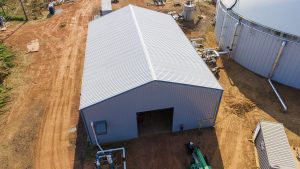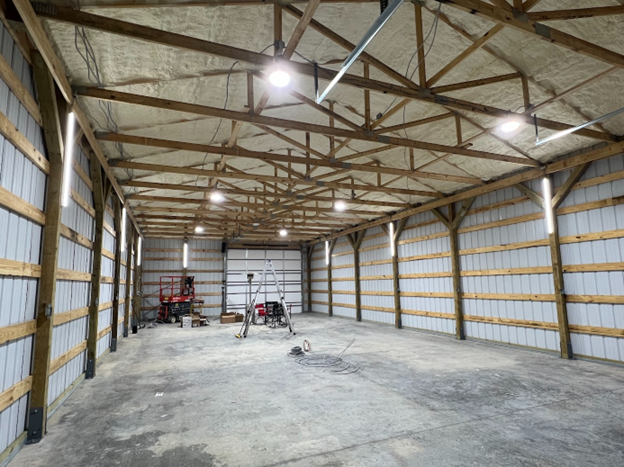Fruit…Comparing Apples to Bananas….
I received an Email this morning from a client I had been working with for some time, after he apparently did some “homework” on pole building comparisons:
“First I want to thank you for your time, quotes and for clarifying several things for me. I ended up selecting xxx out of PA. They beat your price ever so slightly but they had a lot of value-adds that I basically made my decision from, they were: 2×8 skirt board, Gable posts elevate to the top cord on the truss, both eve posts and gable posts are engineer (tuff-post), gable end trusses built with 2×4 siding nailers….”,Your quote and offering was better than xxx Pole Barns & much better than xxxxxx.”
Whenever a client orders a building kit from someone else, I feel as though I did the client a disservice. I firmly believe Hansen Pole Buildings are the best possible post frame building kit available.
 I responded, “Thank you very much for letting us know. We know the folks at xxx and find them to be very professional. We wish you the best on your project. My apologies for not having had us Email back and forth to have clarified potential issues, as well as to have pointed out benefits we offer which you will not be getting.
I responded, “Thank you very much for letting us know. We know the folks at xxx and find them to be very professional. We wish you the best on your project. My apologies for not having had us Email back and forth to have clarified potential issues, as well as to have pointed out benefits we offer which you will not be getting.
We also use 2×8 skirt boards.
We’d done extensive research on the tuff-posts and found they were not a true AITC glulam. Basically they are several plies of 2xs nailed together with construction adhesive between them. They are what they are, and as far as warranty, we also have a lifetime warranty on the columns we provide.
Our buildings utilize a unique X bracing system on the endwall bays which negates the need to extend endwall columns and transfers the endwall wind loads into the roof diaphragm.
While the endwall steel is more than strong enough to span from bottom to top on the end trusses, we easily could have made provisions for siding nailers on the end trusses.
We tested a full roof for resistance against wind loads, as a result, we found over time, with repeated cyclic loads from wind, the screws at the eave, near the ends of the building form slots (this due to the small diameter of the screws). When the slots get long enough it creates roof leaks. https://www.hansenpolebuildings.com/blog/2012/05/design/ You may want to consider asking for a credit for the screws and ordering the screws we supply – not only are they a larger diameter, but they are powder coated.”
We know the people at xxx, as when they have clients contact them from outside of their service area, they refer them to us. Along with this, we did research their “engineered” posts. The columns they are fabricating are made of 2×6 #2 Southern Yellow Pine. The bottom portion has 6’, 10’ and 8’ pressure treated boards which are staggered. Unlike a true AITC (American Institute of Timber Construction) or APA (The Engineered Wood Association) glulams which are manufactured by registered manufacturers, these “engineered” posts do not meet the strict manufacturing requirements.
The pressure treated “base” portion is butted to the untreated upper portion. This is not a finger jointed splice. Today’s true glulams use fully water-resistant phenol-resorcinol adhesives to join the plies, rather than construction adhesives and do not require nails to hold the plies together.
Other than my concerns about the non-reinforced butt joints, I take no issue with these columns being what they are – three pieces of 2×6 which are nailed together.
My client responded, “Appreciate your comments. Just when you think you did all your homework………………… Anyway, what is the cost of the screws you recommend for the roof?”
It turns out we had quoted an entirely different building (30’ x 40’ x 13’) than what the client ended up ordering from the other provider (30’ x 44’ x 16’).
Having never been able to quote a building with the same dimensions (not to mention applied loads and features), I have no idea how the pricing compared. I do know the building this client will be building won’t have the structural aspects I would be looking for in a building of my own. In doing pole building comparisons, it pays to do a complete analysis, not just a quick attempt to match apples to bananas…or perhaps watermelons.









